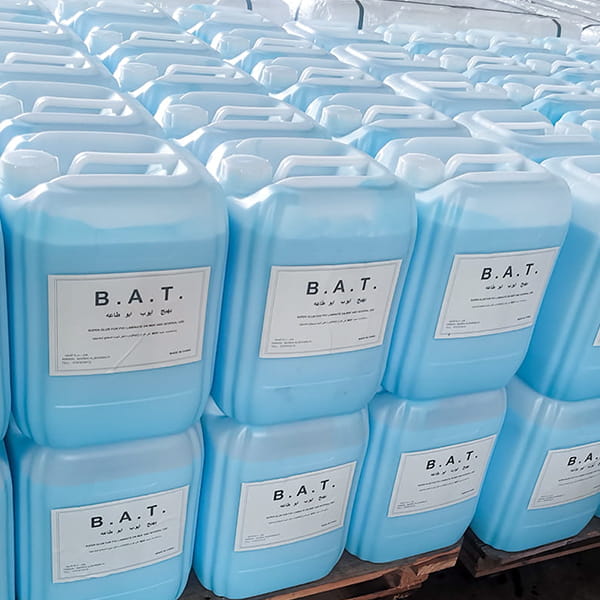When you step into a new car, you're immediately greeted by a symphony of carefully crafted details: the smooth texture of the dashboard, the soft touch of the headliner, the precise alignment of the door panels. While you may not realize it, a quiet revolution in manufacturing has made all of this possible. The days of relying solely on mechanical fasteners like screws, clips, and rivets are fading. Instead, modern vehicles are held together with an intricate network of specialized bonding agents, and none are more crucial to the passenger experience than automotive interior adhesive.
These adhesives are the invisible backbone of a car's cabin, tasked with securing everything from the smallest trim piece to the largest structural components. They're designed to do more than just hold things together; they are engineered to improve a vehicle's performance, safety, and overall quality.
From Glue to High-Performance Engineering
The evolution of automotive interior adhesive has been driven by the industry's need for efficiency and innovation. Today's bonding solutions are a far cry from the simple glues of the past. They are complex chemical formulations tailored for specific applications and materials, offering a host of advantages over traditional fastening methods.
One of the most significant benefits is weight reduction. By replacing heavy screws and bolts with lightweight adhesives, manufacturers can shave off a substantial amount of mass from a vehicle. This directly translates to improved fuel efficiency and, for electric vehicles, increased battery range. This is a critical factor in a world where every gram matters in the quest for greater sustainability.
Beyond weight, adhesives offer a cleaner, more streamlined manufacturing process. They eliminate the need for drilling holes, which can be time-consuming and can weaken the material itself. The adhesive bonding process can be automated and provides greater design flexibility, allowing for more complex shapes and the seamless integration of different materials. This versatility is key to modern, multi-material vehicle construction.
The Science of a Silent Ride
Have you ever noticed how quiet a modern car interior is? A large part of that comfort is thanks to automotive interior adhesive. Adhesives act as a dampening agent, reducing vibrations and minimizing the dreaded squeaks and rattles that can plague a car's cabin over time. Unlike a metal screw that can loosen and vibrate, a strong adhesive bond distributes stress evenly across the bonded surface. This not only improves durability but also enhances the overall acoustic quality of the ride, contributing to a premium feel.
The specialized nature of these adhesives also makes them perfect for bonding dissimilar materials, a common challenge in automotive interiors. For instance, a single adhesive might be used to bond a soft foam headliner to a rigid metal roof, or to attach a plastic dashboard to a leather-wrapped trim. This is a task that would be incredibly difficult, if not impossible, to achieve with traditional mechanical fasteners.

Key Types and Applications
The world of automotive interior adhesive is diverse, with various types designed for specific tasks. Here are a few examples:
-
Hot Melt Adhesives: These thermoplastic adhesives are applied in a molten state and cool rapidly to form a strong bond. They are popular for high-speed assembly lines due to their quick setting time and are often used for applications like securing carpets and headliners.
-
Pressure-Sensitive Adhesives (PSAs): Available in tape or liquid form, PSAs provide an instant bond upon contact. They are excellent for securing lightweight trim, emblems, and wiring harnesses, as they eliminate the need for curing time.
-
Polyurethane Adhesives: Known for their flexibility and strong bond, polyurethanes are often used in areas that require high resistance to temperature fluctuations and vibration, such as dashboard assemblies and door panels.
-
Water-Based Adhesives: These are gaining popularity due to their low volatile organic compound (VOC) emissions, which improves air quality inside the cabin. They are a sustainable and safe choice for laminating fabrics and foams.
The Road Ahead: Innovations and Sustainability
As the automotive industry continues to evolve, so too will automotive interior adhesive technology. The future of these products is closely tied to the rise of electric vehicles and the increasing focus on sustainability.
Future innovations will likely focus on bio-based and low-VOC adhesives to meet strict environmental regulations and consumer demand for "greener" cars. Additionally, as vehicles become more complex with advanced electronics and displays, specialized adhesives will be needed to bond sensitive components and manage thermal loads. The development of new formulations that can bond even more challenging materials, such as advanced composites and lightweight alloys, will be critical.
Ultimately, automotive interior adhesive is more than just a product; it's a foundational element of modern vehicle design. It enables manufacturers to build lighter, quieter, and more sustainable cars, all while creating a more comfortable and premium experience for the driver and passengers. It is a quiet, yet powerful, force in the ongoing evolution of the automobile.